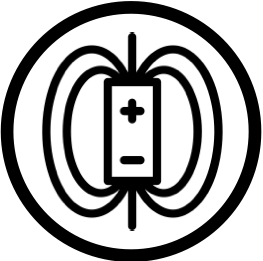Ultra Wide Band Tracking
zactrack is a radio based realtime tracking system using Qorvo's (former DecaWave) unrivaled precise system.
Working indoors and outdoors
Can be used for all weather conditions
Quick and easy setup
Precise location within 10 cm or 4 in
All from a very small tracker
Permeable through materials
Note
For more information on Ultra-Wideband please visit Qorvo’s page here.
Note
For Worldwide Telecommunications Regulations governing the use of Ultra-Wideband radio follow the link here.
Ultra Wideband sends out very short pulses moving at the speed of light. The time of the signal’s arrival is measured. Through this information the receiver is able to determine the transmitter’s location. There are four UWB methods used to locate a position in space. Time Difference of Arrival (TDoA), Angle of Arrival (AoA), Phase Difference of Arrival (PDoA), and Two Way Ranging (TWR).
Two Way Ranging is the method zactrack is built on, chosen for its high precision rate and positional stability.
Two-Way Ranging (TWR) derives its name from the back-and-forth communication between the transmitter and receiver. When working with zactrack, we refer to the transmitter as the "tracker" and the receiver as the "anchor". The tracker doesn't merely broadcast continuous signals without certainty of reception by the anchor.
Instead, it initiates communication with a signal called the 'poll.' The anchor records the poll time and responds with a reply message. Upon receiving this response, the tracker sends a final reply to the anchor. The time it takes for the anchor to receive the final message allows us to determine the distance of the Ultra-Wideband signal.
In the process of locating a single tracker, TWR remains in constant communication with all the anchors simultaneously. The more anchors and trackers integrated into the system, the longer the process takes, as each tracker-anchor interaction is unique. However, this individualized interaction is the power behind the accuracy of this method.
A predetermined amount of time is reserved within one refresh rate for each device on the network, including anchors and active trackers. We call these allocated time intervals 'Time Slots.' The required number of time slots determines the system's refresh rate.
Features of TWR
TWR comes with a set of features that offer advantages when locating via Ultra-Wideband.
The coverage area is defined by all of the anchors communication with the master anchor. Placement of the master anchor in relationship to the rest of the anchors is something to take into consideration when creating your anchor plot.
The shape of the Ultra-Wideband signal being transmitted from the Trackers and Anchors is nearly spherical. This allows for location accuracy when tracking outside of the anchor array.
No time synchronization is required between all the anchors, which increases the robustness of the system.
Considerations when working with TWR
When working with TWR, there are a few things to consider.
The coverage area is defined by all of the anchors communication with the master anchor. Placement of the master anchor in relationship to the rest of the anchors is something to take into consideration when creating your anchor plot.
The battery life of the Trackers is dependent on the refresh rate and the number of anchors in the system.
A range is a single measurement from one antenna (Anchor) and one transmitter (Tracker). A lot of ranges are collected and processed by the zactrack core to find a valid solution. This solution is only a good approximation! It is not possible to find an exact single solution. The system will take all of the ranges into account and provide the most plausible result from this data. Therefore, it is possible to show a quality for each Anchor. If the difference between the range and the position is small then the anchor has provided a good result. This is used in a Trace Mode.
The technical accuracy of the system is within 5 centimeters or 2 inches. However, the overall accuracy of the system is influenced by a combination of three factors.
Update Rate/Refresh Rate
The rate of positional measurements per second determines the amount of data used in the prediction calculations. A higher update rate results in smoother movements. For UWB radio tracking, the typical range is 15Hz to 35Hz.
Error Distribution
The maximum radius and the shape of the error distribution defines the amount of filtering to achieve a stable position measurement.
Latency
Latency is the delay between real-world movements and the output of these movements within the server. This includes how long it takes for an effect device, like a camera or fixture, to respond. When updates are slow or errors exist in the data transmission, it can make this delay even longer.
Interference of the radio signal can take place. Some interference will reflect or bounce back the signal, some will distort or change it and some will shield it or stop it completely.
Reflection “Bounce back the Signal”
Metallic surfaces
Wire meshes
Water surfaces

Distortion “Change the Signal”
Magnetic fields
LED walls
Speakers

Shielding “Stop the Signal”
5cm water – 100%
Body parts
Metal in costumes
